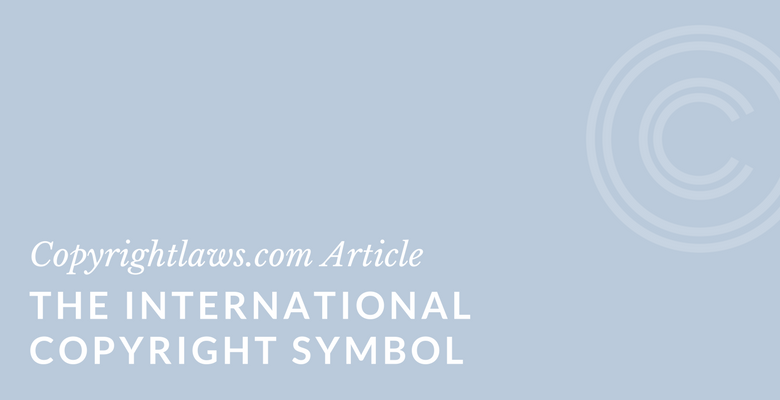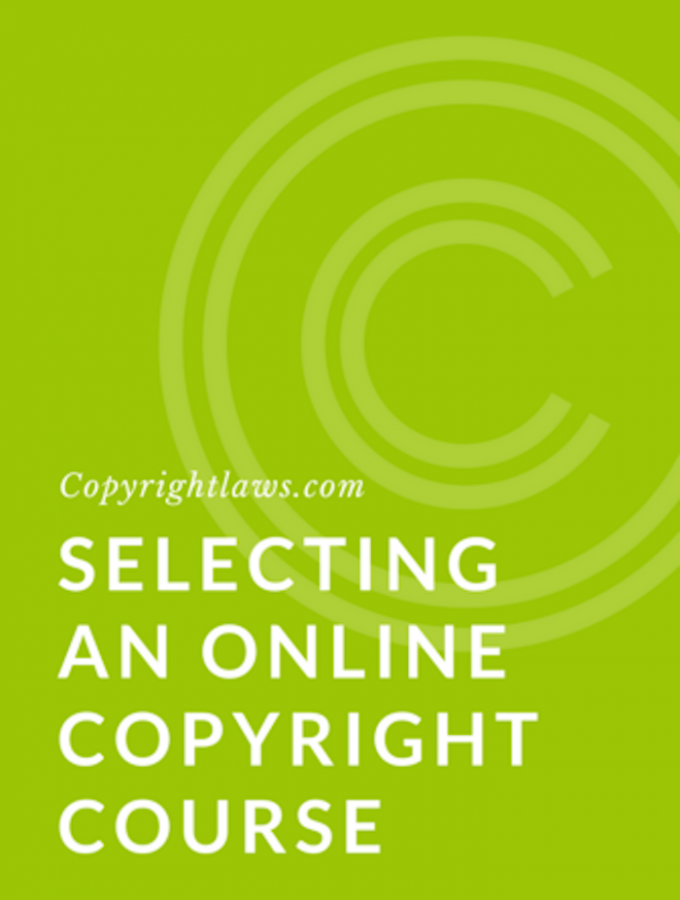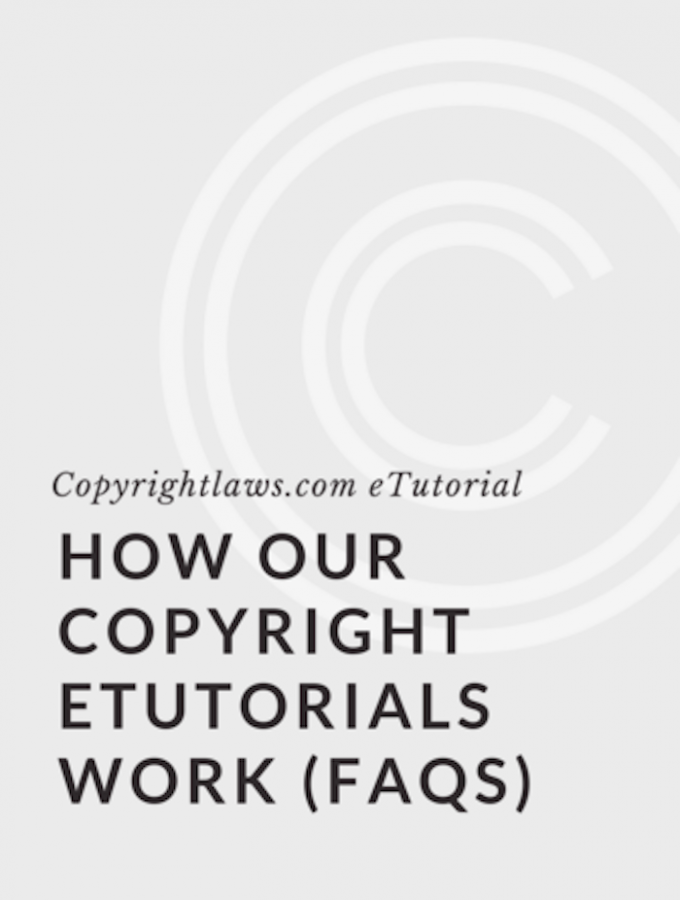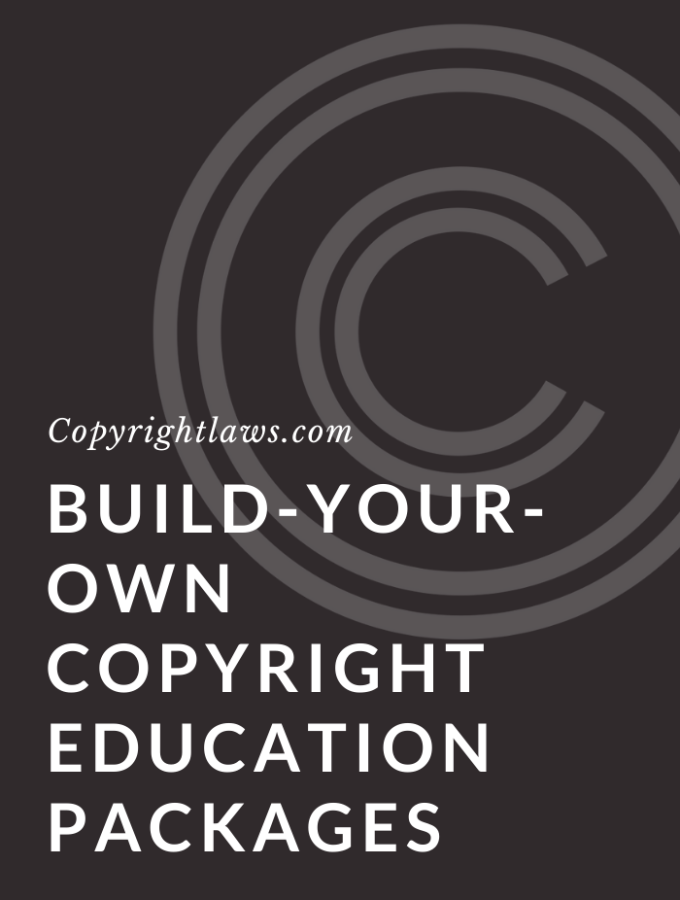
A copyright symbol informs others that copyright exists in your work. It also indicates that those who use (or want to use) your intellectual property should obtain permission from you. This article provides:
- A greater understanding of the purpose of the copyright symbol
- Benefits of using the international copyright symbol
- Information on how to use the copyright symbol and which copyright notice year to use
Why You Should Use the International Copyright Symbol
Some people believe that if a work doesn't bear a copyright symbol, then that work isn't protected by copyright law. This isn't true. In most circumstances, the use of the copyright symbol isn't mandatory.
However, the symbol © is used universally to identify a work protected by copyright and to indicate its copyright owner. The symbol isn't required by the leading copyright treaty, the Berne Copyright Convention (to which 181 countries belong, including the U.S. and Canada). The copyright symbol remains a requirement, however, in another copyright convention, the Universal Copyright Convention.
The information in this article discusses Berne member countries’ use — or non-mandatory use — of the copyright symbol.
Reasons for Using the Copyright Symbol and Notice
In general, a copyright symbol is a reminder to the world at large that copyright exists in the work. Its main purpose is to identify the work's copyright owner. By doing so, it also helps people who want to use the work locate the copyright owner and obtain permission to use it. Also, it shows the work’s first year of publication.
Using a copyright notice doesn't require copyright registration of a work or any specific permission. If there is a copyright symbol, and you search your country's copyright office there's no guarantee that that you'll find the work registered there (although it's always a good start for locating a copyright owner).
In countries where the symbol isn't mandatory, there are still incentives to use it. For example:
- In Canada, use of the symbol provides evidence in a court action that the alleged violator should have known that copyright existed in the work.
- In the U.S., use of the symbol precludes an alleged violator of copyright from submitting that they didn't know that copyright existed in a work. In the U.S., works published before 1 March 1989 were subject to different rules and the copyright notice was mandatory, though corrective steps could be taken if it was omitted on a published work.
- The copyright symbol and notice is educational. While not mandatory, it educates or reminds others that copyright exists in your work and to respect that copyright.
How to Use the Copyright Symbol and Create a Copyright Notice
There are three elements in a copyright notice.
- The “c” in a circle, ©, or the abbreviation “Copr.” or the word “copyright” should be present.
- The name of the copyright owner (not necessarily the author) should be included in the notice.
- The year of first publication should be set out. These elements need not necessarily appear in this sequence. An example is: © Mary Clark 2023 or Copyright © Mary Clark 2023.
A copyright symbol isn't usually used on an unpublished work but may be. Instead of year of publication, the year could be the year the author distributes the work in some manner. The symbol could indicate this with the following wording: Unpublished work © 2023 Mary Clark.
In the U.S., the year may be omitted from the copyright notice where a pictorial, graphic, or sculptural work, with or without text, is reproduced on greeting cards, postcards, stationery, jewelry, dolls, toys or any useful objects.
Which Year Should You Use in Your Copyright Notice?
The general rule is that the year to include in a copyright notice is the year of first publication of the work. First publication is when the work is made available to the public without restriction. This includes selling a book or leaving free copies of it in a public place or posting content on your blog. Publication does not include, for example, circulating copies internally to co-workers or sending copies of a book to a publisher.
For compilations or derivative works which incorporate previously published content, the year of first publication of the compilation or derivative work is sufficient.
What About Blogs and Websites?
New versions or editions of works should contain the publication date of the new version or edition. For constantly evolving websites and blogs that contain works published over several years, the notice may include a range of years (e.g., 2011–2023), starting from the date of the oldest published elements and ending with the date of the newest published elements.
Placement of the Copyright Symbol and Copyright Notice
The copyright notice should be clearly placed in a manner and location best suited to alert the user of the work in question to the fact that copyright subsists in the work. This can vary depending on the type of work involved.
- For a website, a suitable location for the copyright notice may be on the home page, or on a page that appears by clicking through to a specified copyright or legal notices page, or both. For instance, website owners may include a simple copyright notice on its home page and perhaps on other pages of the website, with a click-through to a more detailed copyright and legal notices page. If you're looking for the copyright notice, go to the bottom of the home page and check the listed links for copyright notice or legal disclaimers, et cetera.
- For works published in book form or periodicals, the notice could be placed on the title page, the page immediately following the title page, on either side of the front or back cover, or on the first or last page of the main body of the work. The notice should be in a manner and location that is conspicuous and won't be missed by a casual observer.
The Sound Recording Symbol
Sometimes you see a p in a circle — Ⓟ — on a sound recording. The Ⓟ is the sound recording symbol and is used like the ©, but only with respect to sound recordings. The reasons for marking a work with Ⓟ are similar to those for marking a work with ©. The notice should be placed on the label attached to the recording, or on the cover or container accompanying the recording, or both.
Copyright Warning and Information
In addition to a copyright symbol and notice, some include a “copyright warning” or additional copyright-related information on any copyright-protected works. The warning or information may be as simple as:
For requests to use this copyright-protected work in any manner, email xxx@xxx.com or call xxx.xxx.xxxx.
More comprehensive copyright warnings or information may refer to concepts like fair use and fair dealing, and may mention whether permission is required for non-profit and non-commercial uses of the work. Most print publications and websites have some form of copyright warnings or information. To determine what uses are permitted without further permission, read through this information.
Q&A: Copyright Notice Year
Do you change the years stated on your blog and website?
Use the earliest date of publication. For example, if you first published on your blog in 2012, when you amend the blog content or add to it, continue to use the 2012 date or use a range of dates such as 2012–2023.
If I have a Creative Commons license on my image, should I also include a copyright notice?
Any owner of a copyright-protected work may choose to license their work through a Creative Commons or CC license. If you choose to use a CC license, you'll include that license where you share your work online such as on your website.
It's not mandatory to also include a copyright notice (and it's never mandatory for Berne country members, as explained above), and may even be confusing to your readers. However, it's certainly permitted. One way to lessen the confusion when adding a copyright notice is to include a statement before or after your CC license stating something to the effect that any uses beyond the terms and conditions of the chosen CC license require copyright permission from the copyright owner and include a link to the owner.
Do you want an in-depth understanding of copyright law principles, with practical application and answers to your copyright questions? See our fully online
Copyright Leadership Certificate program. Registration in this course is open on a flexible basis. Email us with your questions.



